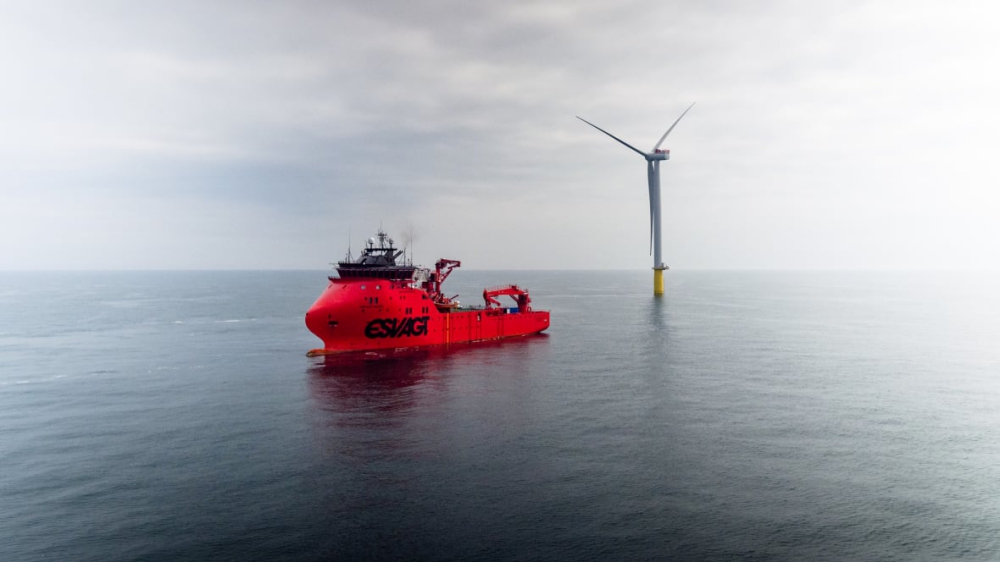Together, ESVAGT, Siemens Gamesa and Ørsted are developing a drone-based solution for the delivery of spare parts and tools from vessel to offshore wind turbine.
There’s a long way to the spare parts when your workday takes place at the top of an offshore wind turbine 40 km from shore.
Now Siemens Gamesa, Ørsted and ESVAGT want to solve this logistical challenge by transporting tools and spare parts from ESVAGT’s SOV (Service Operation Vessels) to the technician at the offshore WTG by means of drones.
ESVAGT’s SOVs are located in the offshore wind farms and have a wide range of spare options on board. Further innovating the transportation of spare parts and tools from vessel to WTG is the next step.
That is why the three companies have engaged themselves in an innovation project bearing the working title Operative package deliveries by drones that will examine the potential in meeting offshore WTG technicians’ needs in an easier way.
‘A technician is wasting time if critical tools or critical spare parts aren’t available to him’, says Flemming Hjorth, Head of New Services Business Development at ESVAGT:
‘When we transfer a WTG technician from vessel to WTG, he brings both spare parts and tools with him. But it often happens that the technician needs additional equipment, tools or spare parts while inside the WTG. Today, such a scenario requires the vessel to return to the WTG or that we send a transfer boat over to the WTG with the necessary gear, which the technician then has to get down and get. This process can be optimised’, says Flemming Hjorth.
Many challenges – and a substantial potential
Siemens Gamesa, Ørsted and ESVAGT cooperate with several subcontractors regarding a solution in the innovation project, where drones can deliver packages weighing up to 3-4 kg directly to the WTG nacelle.
‘Most often, it is the small spare parts that make a difference: smaller electrical components or a specific tool. Delivering these with a drone could potentially spare us a tremendous amount of time and contribute to making the operation of the offshore wind farm even more efficient’, says Flemming Hjorth.
The task isn’t a walk in the park. The nacelles are moving in order to follow the wind, the blades are rotating, and the SOV is constantly working in new areas in the offshore wind farm.
‘Our ambition is to get a drone to transport spare parts between two variable points, following a route that will be adjusted along the way. It is complex, even when using drone pilots, and it becomes even more demanding once you add the changing weight of the cargo, the wind’s impact, the use of magnetic compass in an offshore farm with lots of steel, and so on. But the potential in finding a solution is extremely interesting’, says Flemming Hjorth.
The project Operative package deliveries by drones is sponsored by the European Regional Development Fund and runs until June 2020.
It is not the first time ESVAGT sets foot in a drone project. A year ago, the shipping company formed the joint venture EWPL Ocean, which inspects offshore WTG blades via drones that are operated and piloted from ESVAGT’s vessels.
Source: Press Release

